The Virgin River
Nevada and Utah
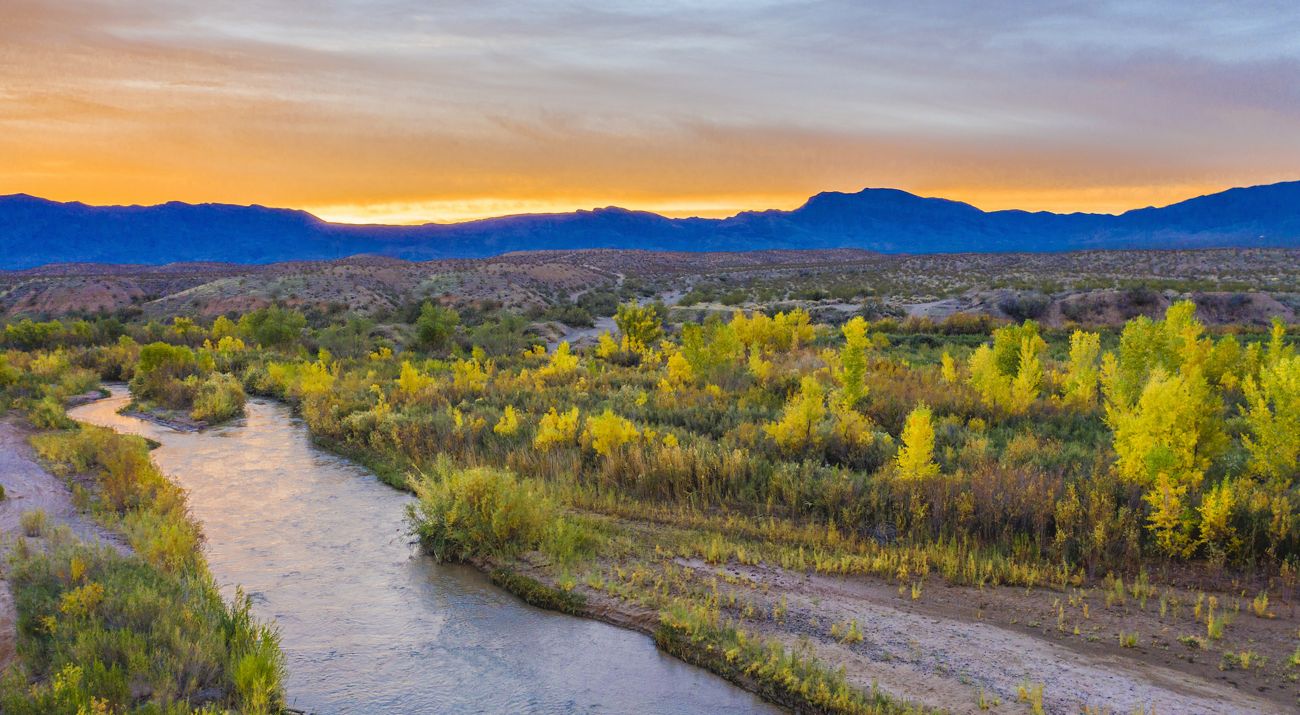
Groundbreaking partnerships preserve a river crucial to wildlife and people.
The Virgin River is located in the southwest United States and provides essential water resources for both people and nature. Every drop matters. Millions of people drink from its waters and rely on its flow to irrigate farms and ranchland. Carving through the world-class scenery of Zion National Park, and through the booming communities of St. George, Utah, and Mesquite, Nevada, the river plays a major role in tourism, recreation, agriculture and local economies.
For nature, the Virgin and its tributaries are also an irreplaceable life source, supporting a rich array of plant and animal species—many found nowhere else on Earth. Its critical riparian corridor is vital for nesting, wintering and migration for an amazing assemblage of neotropical birds including the vermilion flycatcher, Wilson’s warbler, southwestern willow flycatcher, and many more.
However, the Virgin River faces mounting pressures. In southwest Utah, the river is tapped to meet the needs of a rapidly growing population. In Utah and Nevada, non-native species, low flows and high water temperatures threaten the river’s native fish. And throughout the entire region, climate change is driving dangerous drought and heat that threaten the Virgin’s very existence.
That’s why The Nature Conservancy is joining partners in both states to safeguard the river’s vulnerable species and develop water-sharing projects that benefit both people and wildlife. On this site you’ll take a scenic trip where you’ll learn about TNC's approach to saving this precious resource.
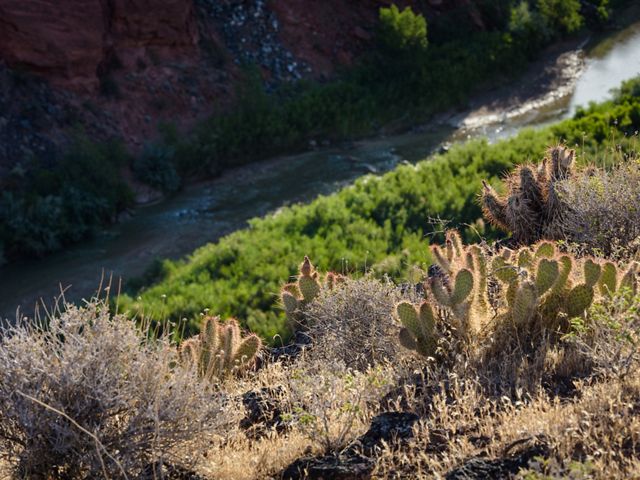
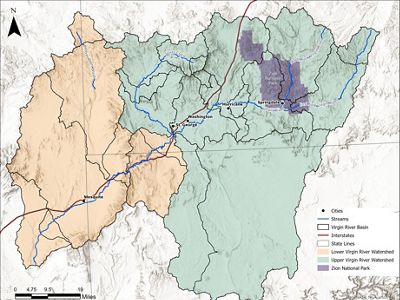
The Virgin River Supports A Variety of Wildlife
-
40
State-sensitive species are supported by the Virgin River.
-
12
Federally-listed species depend on the river to survive.
-
6
Native fish species live in the Virgin River's waters.
Modernizing Infrastructure to Save Water
More water in the Virgin River increases survival odds not just for the fish, but for the huge range of unique and rare plants and animals depending on this river. That’s why TNC and partners are excited about a new collaboration focused on a 17-mile river stretch just below the town of Hurricane, Utah. TNC has worked with a group of diverse partners to obtain funding to modernize Hurricane’s water delivery system. This project will provide some in-stream benefits to increase flows for the river, supporting the at-risk woundfin, Virgin River chub and other river-dependent species. The partners are backing another project in Washington City that will increase flow by piping a return-flow canal.
“TNC brings nature’s voice to the table when decisions are being made,” said Elaine York, Utah’s West Desert Regional Director. “Our goal is to ensure there’s enough water in the right place at the right time so fish can survive, even thrive.”
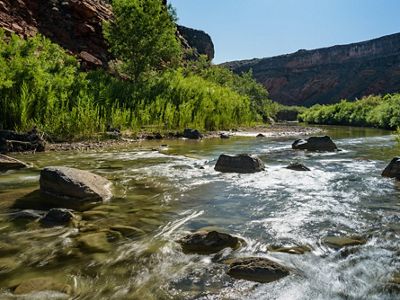
Creating a Nature Preserve
The river corridor from Zion National Park to Hurricane was identified by the Utah Division of Wildlife Resources as one of the most pristine in the American Southwest. Here, the Virgin River has eroded a deep, steep-sided canyon through colorful sandstone formations that bound its floodplain and create a lush riparian zone.
Located along this portion of the Virgin River, TNC's 419-acre Sheep Bridge Nature Preserve is open to the public every day. The land was purchased in 2020 to protect its valuable river and streamside habitat in one of Utah’s most vulnerable and scenic watersheds.
“This was a crucial acquisition,” explained Laura Romin, former acting Utah field supervisor with the United States Fish and Wildlife Service (USFWS). “This stretch of the Virgin River has important habitat values for native fish species, the endangered southwestern willow flycatcher and migratory birds and maintains connectivity of important and rare riparian habitat, which is so vital in the arid lands of Utah’s red rock country.”
The area is well-known to locals and visitors who enjoy nearby Falls Park, on Bureau of Land Management (BLM) land, or mountain bike on BLM’s JEM Trail, which runs through a portion of the Sheep Bridge property.
Sheep Bridge Nature Preserve
Below Virgin, UT, the Virgin River drops into a deep, dramatic canyon. Sheep Bridge, a 419-acre property, encompasses river corridor, floodplain, striking arroyos and uplands. TNC has purchased the Sheep Bridge parcel and protected what the Utah Division of Wildlife Resources calls one of the most pristine corridors in the American Southwest.
Visit Sheep Bridge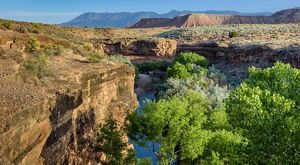
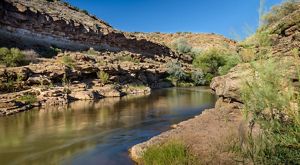
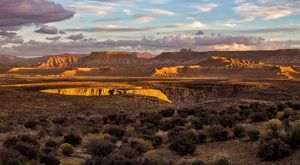
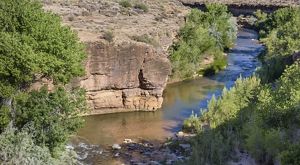


Sheep Bridge: Bird's eye view of the Virgin River on Sheep Bridge. © Stuart Ruckman

Sheep Bridge: Bend in the Virgin River on the Sheep Bridge parcel. © Stuart Ruckman

Sheep Bridge Panorama: Expansive view of Sheep Bridge, along the Virgin River in Utah. © Gary Leverett

Sheep Bridge : View looking down on the Virgin River from Sheep Bridge. © Stuart Ruckman

Sheep Bridge: Below Virgin, UT, the Virgin River drops into a deep, dramatic canyon. Sheep Bridge, a 419-acre property, encompasses river corridor, floodplain, striking arroyos and uplands. © Gary Leverett
Quote: Elaine York
TNC brings nature’s voice to the table when decisions are being made. Our goal is to ensure there’s enough water in the right place at the right time so fish can survive, even thrive.
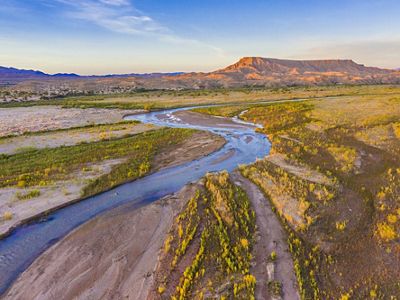
Protecting Native Fish
The Virgin River has a significant diversity of plants and animals, thanks to its riparian habitat in the desert and its location at the boundaries of three ecoregions: the Colorado Plateau, the Great Basin and the Mojave Desert. The six native fish species (desert sucker, speckled dace, flannelmouth sucker, Virgin spinedace, Virgin River chub and woundfin) that call the upper and lower Virgin River home are all considered to be declining, with five listed as Vulnerable or Protected by Utah, Nevada and Arizona.
Desert rivers are tough places for most fish to live, yet species living in the Virgin River have adapted to arduous conditions: extensive floods, low flows, large sediment loads and high variability in water and air temperatures. But fish can only adapt so much. Researchers have identified that low flows and high water temperatures, competition and predation from non-native species, and a reduction in aquatic habitat quantity and quality are the primary factors causing these declines. As the numbers of native fish have declined, the percentage of non-native species in the river have increased.
In 2018 BLM commissioned a United States Geological Survey study to determine the flows needed to sustain native fish. Understanding the relationship between water flow and water temperature will determine when and how much additional river flow will help sustain fish species.
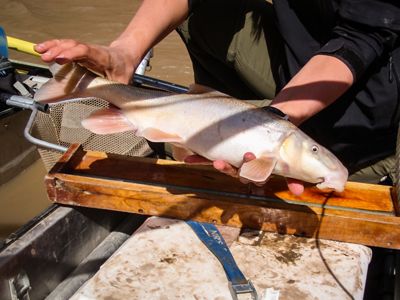
Building Community Support
In September 2017, a group of 23 local community members, irrigation and water districts, non-profit organizations, city representatives, and county, state and federal partners convened to organize the Virgin River Coalition (VRC), with a focus on the Virgin River watershed in Arizona and Nevada, to support similar efforts already underway for the Utah reaches of the river and its tributaries. The goal of the VRC is to ensure that the Lower Virgin River, from the Utah state line to Lake Mead, continues to support local communities and nature. In 2019, the group completed a Watershed Plan to improve the ecological health of the river to benefit future generations of residents, businesses, recreational users, farmers and ranchers. In 2020, TNC hired a Virgin River Coordinator (VRC) who will help organize community volunteer events and provide educational outreach with the goal of increasing public awareness of and engagement with the Virgin River Watershed Area.
The regular VRC workshops have generated new relationships and collaborations among stakeholders, and have helped the diverse participants find common ground. This collaborative approach will maximize the success of protecting the waters of the Lower Virgin River for communities and nature.
Next steps for the VRC will include assisting the City of Mesquite with its recreation plan, initiating restoration actions for riparian habitat, developing a plan to restore native fish species, and exploring ways to increase the flexibility of water management to benefit farmers, the community and the river.


Quote: Tanya Anderson
Water is central to everything in the Virgin River watershed and is a scarce resource, which necessitates thoughtful planning to accommodate the needs of people and nature.